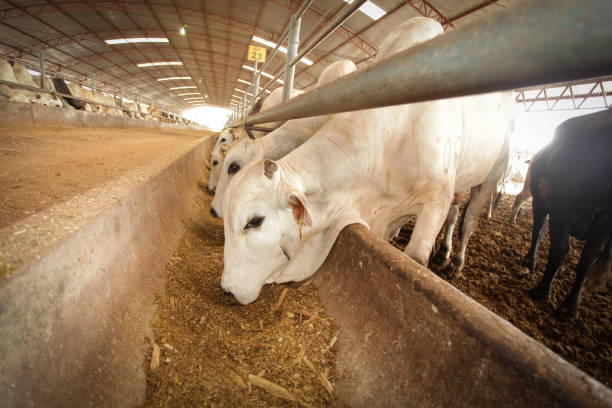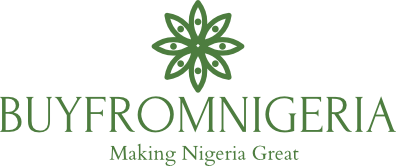Livestock farming is a vital component of the global agricultural industry, providing a steady supply of meat, dairy, and other essential products. However, the success and sustainability of livestock farming ventures are deeply intertwined with adherence to regulatory and compliance standards. These standards are put in place to safeguard the environment, ensure animal welfare, and maintain food safety. As an investor looking to enter the livestock farming sector, understanding and navigating these regulatory frameworks is paramount.
This blog post delves into the crucial regulatory and compliance factors that significantly impact investments in livestock farming. We will explore the intricate web of regulations governing everything from environmental practices to animal welfare and food safety. By gaining insights into these essential elements, you’ll be better equipped to make informed decisions and mitigate potential risks in your livestock farming endeavours.
In the following sections, we’ll dissect the various dimensions of regulatory compliance, providing practical advice, case studies, and a roadmap to navigate this complex landscape. From environmental regulations to economic considerations, we’ll cover it all. Join us on this exploration of the regulatory terrain that shapes the landscape of livestock farming investments.
Regulatory Landscape for Livestock Farming
Livestock farming, like any other agricultural sector, operates within a framework of regulations and oversight. These regulations are put in place by government agencies and industry organisations to ensure the safety, sustainability, and ethical practices within the industry. Understanding the key regulatory bodies involved is crucial for any investor looking to navigate the livestock farming landscape effectively.
Primary Regulatory Bodies
– The United States, for example, is governed by the United States Department of Agriculture (USDA), which plays a central role in regulating various aspects of livestock farming, including animal health, meat inspection, and environmental compliance. Similar agencies exist in other countries with their specific mandates and regulations.
Roles and Responsibilities
– Regulatory bodies oversee a wide range of activities in livestock farming, including setting and enforcing standards for animal welfare, food safety, environmental protection, and more. They conduct inspections, issue permits, and provide guidance to farmers on compliance.
Industry Associations and Collaborative Efforts
– In addition to government agencies, industry associations and collaborative initiatives also play a significant role. These organisations often work in conjunction with regulators to develop best practices, advocate for industry interests, and ensure compliance with evolving standards.
Understanding the regulatory landscape is the first step in ensuring successful and sustainable investments in livestock farming. It provides the necessary foundation for aligning your farming practices with industry-wide expectations and legal requirements.
Environmental Regulations
Livestock farming, by its nature, has a significant environmental footprint. As a result, governments around the world have established a set of regulations aimed at minimising the impact of these operations on the environment. Compliance with these regulations is not only a legal requirement but also a crucial step towards sustainable and responsible farming practices.
Waste Management
– Livestock farming generates a substantial amount of waste, including manure and other by-products. Environmental regulations dictate proper handling, storage, and disposal of these wastes to prevent contamination of soil and water sources.
Water Quality Standards
– Maintaining water quality is paramount in livestock farming. Regulations set limits on pollutants that can be discharged into water bodies, ensuring that nearby ecosystems and communities are protected from harm.
Land Use and Conservation
– Zoning regulations and conservation programs may dictate how land can be utilised for livestock farming. This includes considerations for preserving natural habitats, preventing soil erosion, and managing grazing lands.
Air Quality Control
– Livestock farming operations can release various pollutants into the air. Regulations may require the implementation of measures to control emissions and reduce air pollution.
Navigating these environmental regulations requires a comprehensive understanding of local, state, and federal laws. Additionally, adopting sustainable practices, such as utilising manure as fertiliser or employing innovative waste management techniques, can not only enhance compliance but also contribute to the overall sustainability of the operation.
Animal Welfare Standards

Ensuring the humane treatment of animals is a fundamental aspect of responsible livestock farming. Regulatory bodies have established a comprehensive set of standards and guidelines to govern the care, handling, and treatment of livestock on farms. Compliance with these standards not only reflects ethical farming practices but is also legally mandated.
Living Conditions
– Animal welfare regulations specify the minimum requirements for the living conditions of livestock. This includes considerations for space, shelter, ventilation, and access to clean water and food.
Health and Veterinary Care
– Farmers are obligated to provide adequate healthcare to their livestock. This includes routine vaccinations, disease prevention measures, and timely veterinary intervention in case of illness or injury.
Transportation and Handling
– Standards for the transportation of livestock, both within and outside the farm, are established to minimise stress and ensure the safety of the animals.
Euthanasia and Slaughter Practices
– Regulations outline humane methods of euthanasia and slaughter to minimise suffering and distress for the animals involved.
Compliance with animal welfare standards not only upholds the ethical treatment of livestock but also contributes to the overall health and productivity of the animals. It fosters a positive reputation for the farm, which can be a key factor in building consumer trust and securing market access.
Food Safety and Quality Assurance
In the livestock farming industry, ensuring the safety and quality of the products that reach consumers is paramount. Regulatory bodies establish rigorous standards and protocols to guarantee that the meat, dairy, and other products produced on farms meet the highest levels of safety and quality.
Meat Inspection and Processing
– Stringent regulations govern the inspection and processing of meat products. This includes requirements for facilities, equipment, and hygiene practices to prevent contamination and ensure safe consumption.
Traceability and Record-Keeping
– Livestock farms are required to maintain detailed records of animal health, feed, and medication usage. This aids in traceability, allowing for swift action in the event of a food safety concern or disease outbreak.
Quality Control Measures
– Quality assurance programs encompass various checks and balances to maintain product quality. This may include monitoring of factors such as temperature control, cleanliness, and adherence to specific production standards.
Labelling and Packaging Standards
– Regulations dictate the information that must be included on product labels, ensuring consumers have accurate and transparent information about the origin, handling, and contents of the products they purchase.
Adherence to food safety and quality assurance standards not only safeguards consumer health but also establishes trust in the products coming from your farm. This trust is crucial in building a loyal customer base and securing long-term success in the market.
Economic and Financial Compliance
Investing in livestock farming involves navigating a range of economic and financial considerations, many of which are influenced by regulatory and compliance factors. Understanding these aspects is crucial for making informed financial decisions and ensuring the long-term sustainability of your farming venture.
Grants and Subsidies
– Governments often provide grants, subsidies, and financial incentives to support sustainable and responsible farming practices. Understanding the eligibility criteria and application process is essential for accessing these resources.
Taxation and Reporting
– Livestock farming operations are subject to various tax regulations, including income tax, property tax, and potentially other agricultural-specific taxes. Ensuring accurate and timely reporting is vital for compliance.
Financial Transparency and Accountability
– Maintaining clear and accurate financial records is not only a good business practice but also a regulatory requirement. This includes proper bookkeeping, financial reporting, and compliance with auditing standards.
Risk Management and Insurance
– Compliance with insurance and risk management requirements helps protect your investment and assets in the event of unforeseen events, such as natural disasters or disease outbreaks.
Navigating the economic and financial compliance landscape requires a comprehensive understanding of both agricultural-specific financial considerations and broader financial regulations. Working closely with financial advisors and agricultural specialists can be instrumental in ensuring compliance in this complex area.
Navigating Regulatory Challenges
Navigating the intricate web of regulations governing livestock farming can be a formidable task, but it’s a critical aspect of ensuring the success and sustainability of your investment. Here are some practical tips for effectively managing regulatory compliance in your livestock farming venture:
Stay Informed and Engaged
– Keep abreast of regulatory changes and updates. Join industry associations, attend seminars, and participate in workshops to stay informed about the latest developments in agricultural regulations.
Consult with Experts
– Seek advice from legal, financial, and agricultural experts who specialise in livestock farming. Their expertise can provide invaluable insights into compliance requirements and strategies.
Implement Robust Record-Keeping Systems
– Maintain meticulous records of all aspects of your farming operation, from animal health and treatment to financial transactions. This not only aids in compliance but also supports efficient farm management.
Invest in Training and Education
– Ensure that your farm staff are well-trained and educated on compliance requirements. This empowers them to implement best practices and adhere to regulatory standards in their day-to-day activities.
Proactively Address Environmental Concerns
– Adopt sustainable and environmentally-friendly practices to not only meet regulatory requirements but also demonstrate a commitment to responsible farming.
Regularly Review and Update Compliance Measures
– Regulations can evolve over time. Regularly review your compliance measures to ensure they align with the most current standards and expectations.
By taking a proactive approach to regulatory compliance, you not only minimise risks but also position your livestock farming venture for long-term success and resilience in a dynamic regulatory landscape.
Conclusion
Investing in livestock farming holds immense potential, both for economic returns and for contributing to the global agricultural industry. However, it comes with the responsibility of navigating a complex web of regulatory and compliance factors. Understanding and adhering to these standards is not just a legal obligation, but a fundamental step towards sustainable and ethical farming practices.
Throughout this blog post, we’ve explored the key regulatory dimensions that impact livestock farming investments. From environmental regulations to animal welfare standards, and from food safety to financial compliance, each factor plays a vital role in shaping the success of your farming venture.
As you embark on your journey into livestock farming, remember that compliance is not merely a box to tick, but a commitment to responsible and forward-thinking agriculture. It is a pledge to uphold the highest standards of environmental stewardship, animal welfare, and product quality.
By staying informed, seeking expert guidance, and proactively implementing compliance measures, you are not only safeguarding your investment, but also contributing to a more sustainable and resilient agricultural sector.
We encourage you to embrace the regulatory landscape as an opportunity for growth, innovation, and positive impact. With the right approach, your livestock farming venture can thrive, benefiting both your bottom line and the broader community.
Thank you for joining us on this exploration of the regulatory and compliance factors shaping livestock farming investments. We wish you success and fulfilment in your agricultural endeavours.












